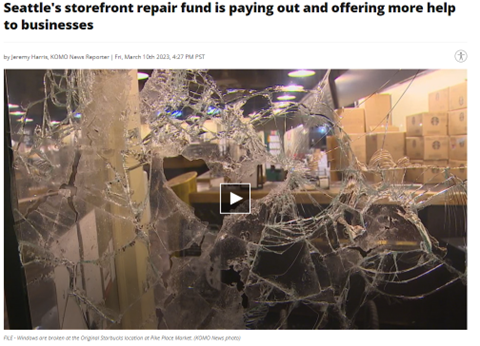Survey results: Is Seattle on the right track?
Let’s leap into our March 2023 Newsletter!
Please click on the links below to zip to the sections that interest you the most:
- State of the City, Part 2: You. Two surveys reveal Wrong Track/Right Track results for Seattle.
- District 4: Dangerous encampment closed under I-5; Cherry Blossom Festival; electric vehicle charging stations; Storefront Restoration grants still available; Seattle Preschool Program expanding; UW women’s basketball winning.
- Public Safety and Homelessness: Public safety survey results; Federal law enforcement achieves major drug/gun bust; City Attorney’s strategy on prolific offenders is working; Mayor’s Office / SPD’s efforts to hire officers continues to lag officers leaving; Seattle Times investigation confirms City of Seattle bears brunt of homelessness; King County Regional Authority considers amendments to its unrealistic plan.
- Taxes and Budgets: Local leaders continue to raise property taxes.
- Land Use Policies Impacting Seattle: Mayor’s proposed legislation to protect trees coming into focus and under scrutiny.
- Transportation & Seattle Public Utilities Committee: Vision Zero success must include enforcement; Update on bridge audit shows SDOT completed just 1 of 10 recommendations so far; Survey of commuters confirms most used (and least used) transportation post-pandemic. Impact Fees can fund transportation infrastructure that everyone wants. Sound Transit acknowledges need to make stations safer.
- Providing Input.
For my previous newsletters, you can CLICK HERE to visit my website / blog. Thank you for caring enough to demand better from City Hall.
State of the City Follow-Up:
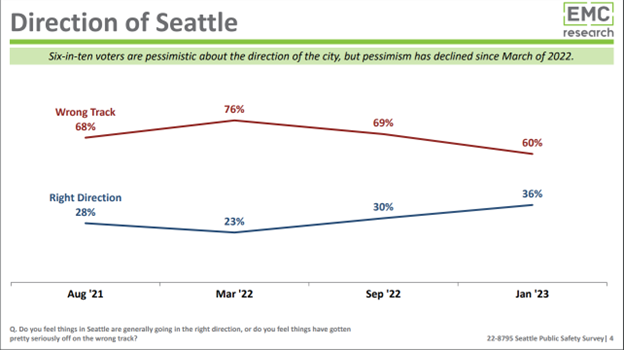
As I reported in last month’s newsletter, the Mayor’s “State of the City” speech was upbeat, and he concluded, “The state of our City is that we are ready and willing to put in the hard work.”
What Does Seattle Think? A recent survey shows that 60% of residents think Seattle is on the wrong track. That’s obviously not good. As the historical line graph shows, however, that is actually an improvement from the previous survey when 69% said Seattle is on the wrong track.
The poll was conducted by the reputable firm EMC Research by surveying 500 randomly selected likely voters within the city limits from January 17 through 22, 2023. For the press release announcing the EMC survey results, CLICK HERE. For the rest of the EMC survey — which shows homelessness as the #1 concern and strong support for public safety measures — CLICK HERE. For the previous polls conducted by EMC, CLICK HERE.
What Do Your Neighbors Think?
After Mayor Harrell delivered his second annual “State of the City” speech on February 21, 2023, I asked readers of my monthly e-newsletter to answer the overarching question for themselves.
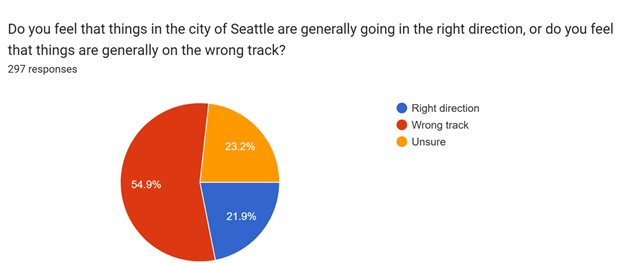
Our e-newsletter last month included a survey with just that one question: “Do you feel things in the city of Seattle are generally going in the right direction, or do you feel that things are generally on the wrong track?”
It yielded similarly negative results as the citywide survey by EMC Research, though my informal survey also offered the choice of “Unsure.” The pie chart shows that more than half of my survey respondents think Seattle is on the “Wrong Track.” The lowest percentage (21%) think Seattle is on the right track and 23% are unsure.
This online survey sent to our e-newsletter recipients was open for one week from February 27 through March 6, 2023. As I mentioned last month, this wasn’t scientific because the survey pool is just my e-mail list and the respondents self-select to take the survey, rather than being randomly selected. The total number of respondents (297 in this case) is enough to produce a 95% confidence level of plus or minus 6 percentage points. In other words, if the survey result is 21%, there’s a 95% chance that the reality is anywhere between 15% and 27%. — but that’s nullified by the fact that it’s not a random sample. So why am I showing these imperfect results? Because people get cranky when I do a survey and I neglect to provide the results (imperfect or not) in the next newsletter!
However, the statistically valid surveys professionally administered by EMC Research confirm that most people (60%) think Seattle is on the wrong track. Based on the answers to the other questions in the EMC surveys, this negative outlook is likely because people are not satisfied with local government’s progress in addressing the respondents’ top priorities: reducing homelessness and crime. I believe our local government needs to accelerate its positive actions to get better results, faster.
DISTRICT 4
Encampment Ending Under I-5 Near Public Elementary School
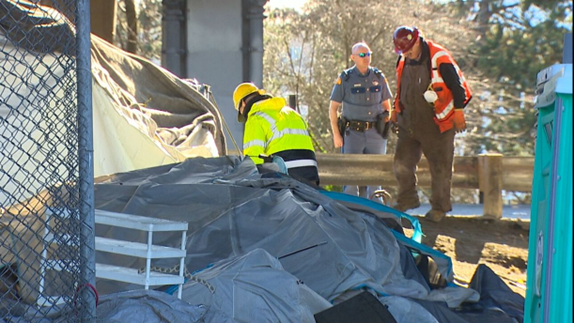
As reported by KOMO News, ”Work crews began efforts Monday [March 27, 2023] to remove the homeless encampment that occupied both sides of I-5 underneath the Ship Canal Bridge in Seattle [near NE 42nd Street]. The removal comes after months of demands from neighbors in Wallingford and parents at the John Stanford International School who said the encampment was an immediate threat to the safety of the elementary school students.”
I visited the site again on March 28 and March 30, and it was clear there was much work to be done, especially on Pasadena Place side on the edge of the U District.
I continue to support the passion of parents sick and tired of government agencies that allowed more than a dozen people to suffer outside for several months under I-5 in dangerous and inhumane conditions with deaths, fires, gunshots, thefts, and other crimes next to a public elementary school. I am grateful to the parents and principal of John Stanford Elementary School for their ongoing demand for action at this dangerous encampment. With all the financial resources and time provided, Washington State officials and the King County Regional Homelessness Authority (KCRHA) were overdue in providing shelter to the encampment’s residents and securing this site to prevent any new tragedies on their watch.
While I am relieved, I am not impressed. I am relieved that 15 people suffering outside were finally connected to shelter. However, I am frustrated government agencies took so long to do their jobs. It’s unacceptable to take more than six months to address this dangerous encampment near a public elementary school and to provide shelter to the encampment’s residents.
- For coverage by the neighborhood news blog Wallyhood, CLICK HERE.
- For coverage by KOMO News, CLICK HERE, and from King 5 News, CLICK HERE.
And the work of the State government and KCRHA is far from over. There are similar dangerous sites of squalor along I-5 near NE 45 Street and near NE 50th Street and further north. I urge the State and regional agencies to revamp their sluggish process to make it 10 times faster or else I have little confidence that giving their leaders more money will reduce homelessness.
It’s relevant to note that the City of Spokane recently filed a formal complaint in court demanding that WSDOT to do a better job addressed a large, longstanding encampment on State property.
If you want to contact your government officials to urge them to bring people inside faster and restore safety to State government properties along I-5, here are the email addresses of relevant officials:
- Marc Dones, CEO of KCRHA
- Roger Millar, WSDOT
- Brian Nielsen, WSDOT
- Ron Judd, WSDOT
- Lisa Brown, State of Washington Department of Commerce
- Noha Mahgoub, Senior Policy Advisor to Governor Inslee
- State Sen. Jamie Pedersen (43rd Legislative District)
- State Rep. Frank Chopp (43rd Legislative District)
- State. Rep. Nicole Macri (43rd Legislative District)
- Washington State Patrol
- cc: Tiffany Washington, Deputy Mayor for Housing & Homelessness
Marc@kcrha.org
MillarR@wsdot.wa.gov
NielseB@wsdot.wa.gov
JuddRon@wsdot.wa.gov
Lisa.Brown@commerce.wa.gov
Noha.Mahgoub@gov.wa.gov
Jamie.Pedersen@leg.wa.gov
Frank.Chopp@leg.wa.gov
Nicole.Macri@leg.wa.gov
John.Batiste@wsp.wa.gov
Tiffany.Washington@seattle.gov
Enjoy the Cherry Trees Still Here in Northeast Seattle

There was a lot of news coverage about the prolonged process that led to the sad removal of the cherished cherry trees near Pike Place Market, but District 4 residents can take heart that the best remaining cherry trees are inside the University of Washington’s main campus. In fact, we have our own festival to share the beauty.
Thanks to the U District Partnership nonprofit that manages the Business Improvement Area (BIA), check out the second annual U District Cherry Blossom Festival: “Each year thousands of people from around the region and beyond flock to the University of Washington (UW) campus to see the blooming of the cherry trees on the UW Quad. The historic cherry trees were a gift from Japan and are nearly 90 years old. Originally planted in a grove at the Washington Park Arboretum, they were moved to the UW campus in 1964 where they continue to bloom today. To honor this tradition and the beginning of spring in Seattle, local businesses have come together to present a special U District menu featuring a variety of cherry and cherry blossom-themed food, drink and retail specials available from Friday, March 24 through Sunday, April 2.”
- For more info about the Cherry Blossom Festival, including an interactive map of participating restaurants, CLICK HERE. To learn more about other events and attractions, CLICK HERE. For details about viewing the cherry blossoms and what to expect, CLICK HERE.
- For a Seattle Times article on the UW cherry trees blooming late (through mid-April) this year, CLICK HERE.
- For the e-newsletter from the U District Partnership sent on March 22, 2023, CLICK HERE.
- For the newsletter from the nearby University Park neighborhood sent on March 27, 2023, CLICK HERE.
Want an Electric Car, But Worried Where/How to Charge It? More Stations Charging Ahead
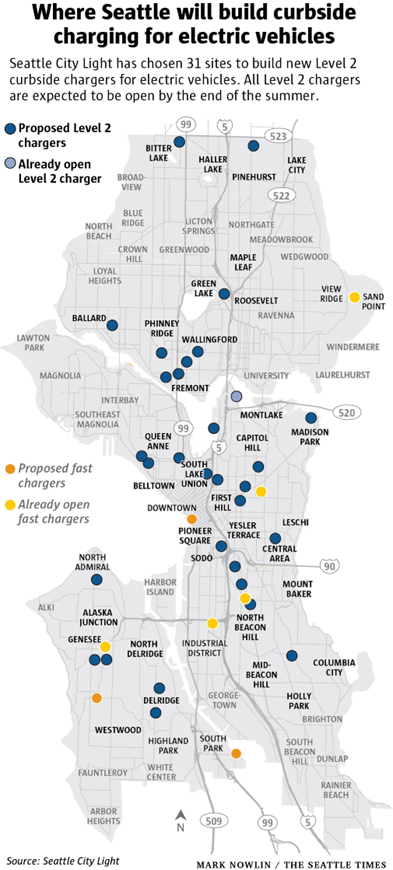
- For the article on forthcoming charging stations, as it appeared in the Seattle Times, CLICK HERE.
- For the announcement from Seattle City Light, CLICK HERE.
Storefront Restoration Grants Still Available for Businesses in Northeast Seattle and Beyond
Although demand for the storefront repair grants was strong, Seattle’s Office of Economic Development still has funding available.
- To apply through the City’s Office of Economic Development, CLICK HERE. Be sure to review the eligibility criteria before applying, because many small businesses that applied during the past few months were not eligible.
- For thorough coverage on the current status of the storefront restoration program by KOMO News on March 10, 2023, CLICK HERE.
Seattle Preschool Program (SPP) Expanding; Applications for 2023-2024 School Year Open Now!
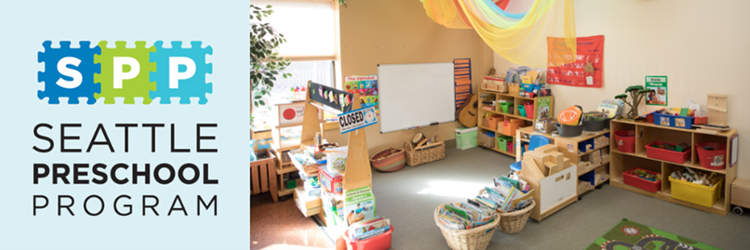
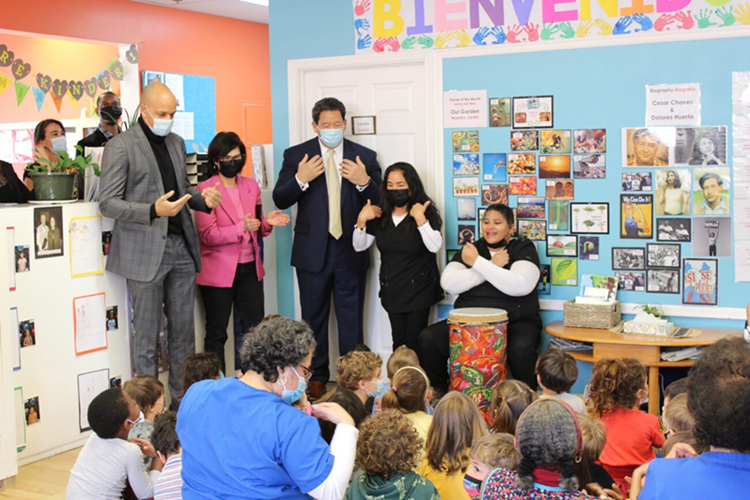
Seattle’s award-winning preschool program is expanding to 89 sites citywide, including 28 dual-language classrooms supporting instruction in eight languages. Seattle’s Director of the Department of Education & Early Learning (DEEL) Dr. Dwane Chappelle, Councilmember Tammy Morales, Mayor Bruce Harrell, the La Escuelita Education Director, and preschool parent all spoke at the March 15, 2023 press conference to announce the seven-classroom expansion of SPP and the opening of applications for the 2023-2024 school year.
Though the new SPP expansion classrooms are not located in District 4, the program’s current locations in District 4 include Denise Louie at Magnuson Park, SPP at Sand Point, the Experimental Education Unit at UW, and SPS at Thornton Creek.
In 2013-2014, I was proud to collaborate with several caring professionals to develop this evidence-based program under the leadership of Tim Burgess, approved by voters as a pilot program in November 2014, and greatly expanded by voters in November 2018. Rigorously evaluating this early learning program every year for its adherence to evidence-based (proven to work) parameters is the key to ensuring preschoolers receive the high-quality, early learning promised to voters — because only high-quality benefits the kids.
- To apply for the SPP 2023-2024 school year, CLICK HERE.
- For Mayor Harrell’s press release regarding SPP expansion and application openings from March 15, 2023, CLICK HERE.
The Winning Women of Washington Basketball Celebrate Their Own “March Madness”

The University of Washington women’s basketball team impressed in their first appearance in the Women’s National Invitation Tournament (WNIT) semifinals.
- For recent Seattle Times sports coverage, CLICK HERE.
- For an explanation of the difference between the WNIT and the more commonly known NCAA tournament, CLICK HERE. I realize this has nothing to do with city government, but UW and its teams play in District 4 and so let’s celebrate this, okay?
PUBLIC SAFETY and HOMELESSNESS
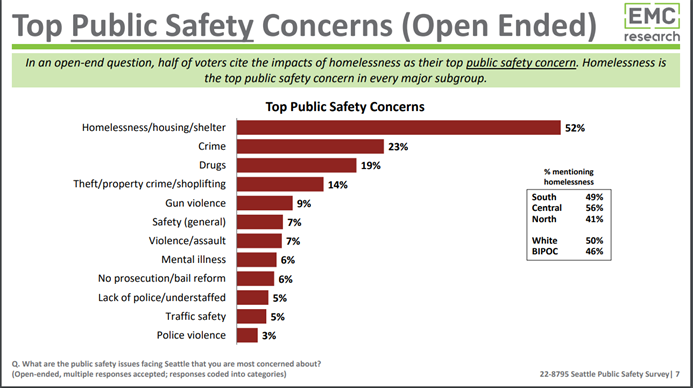
When asked, “What are the public safety issues facing Seattle that you are most concerned about,” more than half of the randomly selected Seattle voters cited “homelessness.”
Before and during the pandemic, many local policymakers have been careful to discuss homelessness and public safety separately to avoid automatically / inaccurately conflating crime and homelessness and to avoid sounding callous or inadvertently encouraging hostility toward our unhoused neighbors. Recently, more local policymakers are recognizing that certain safety emergencies (gunshots, fires) have been associated with long-standing encampments that the City, State, or King County Regional Homelessness Authority allow to grow. This is likely due to several factors: some people residing in encampments are preyed upon by criminals, are committing property crimes to pay for drugs, and/or are living in chaotically harsh conditions more susceptible to violence and fires. Regardless, when voters were asked about public safety in this statistically valid survey, most thought first about homelessness.
I believe the response to illegal encampments must consider the safety of not only those struggling to survive in unsafe conditions, but also people and employers who might be impacted nearby. The responsible government agencies must act with more urgency to bring people inside so that everyone is safe and feels safe.
Other key findings from this survey:
“A strong majority of voters (70%) believe we need more officers to keep us safe and reduce crime, and that things like signing bonuses will help (66%), while they are evenly split on whether the department has made progress on reforms (51%-45%). More than six in 10 voters (62%) view Seattle police favorably.”
“Eight in 10 voters (80%) support the idea of a public safety force with unarmed officers to respond to low-priority calls.”
- For a Seattle Times article discussing the survey results, CLICK HERE.
- For the news release announcing the survey focused on safety issues, CLICK HERE.
- For the PowerPoint presentation summarizing the key results, CLICK HERE.
- For the other, more comprehensive polls of Seattle voters called “The Index” — from October 2022, March 2022, and August 2021 — CLICK HERE.
Thanks to Federal and Regional Law Enforcement Agents for Addressing Public Safety
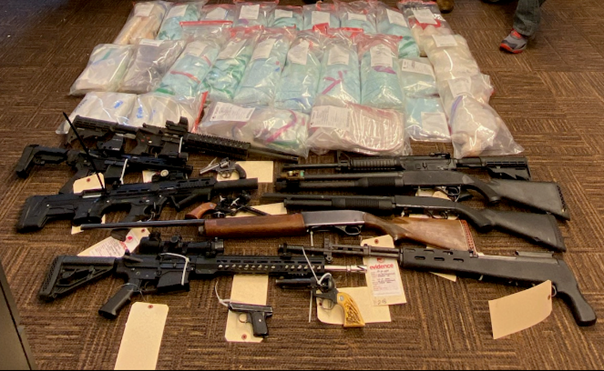
From KOMO News, March 27, 2023: “A two-year federal investigation netted 24 arrests of members of a drug-trafficking operation with ties to a white supremacist prison gang and led federal agents to seize nearly two million doses of fentanyl, over 200 pounds of methamphetamine, and more than 200 guns during the course of the operation. Federal officials said the operation moved drugs from Mexico through Washington state, Idaho, and Alaska.
“’Not only are we seeing the drugs coming in from Mexico, but we’re also seeing the sheer amount of weapons that we seize, some of those are going down to Mexico to fuel the violence of the cartels down there in Mexico,’” Acting Special Agent in Charge Jacob Galvin with the Drug Enforcement Administration in Seattle said.
“Last week, a grand jury indicted 27 inpiduals involved. Twenty-four have been arrested and are in custody, while three are still being sought by law enforcement.
“Federal officials said in a press conference Monday the organization, which has ties to the ‘Aryan Family,’ a white supremacist prison gang, “’cultivated a business relationship with the Sinaloa cartel to import and distribute a staggering amount of narcotics.’
“’Our combined efforts in this investigation seized enough fentanyl to kill everyone who lives in the city of Tacoma, the city of Seattle, and have enough lethal doses leftover to poison an additional 500,00 inpiduals within the Puget Sound region,’ Galvin said.”
For the story from KOMO News, CLICK HERE, and for the story from King 5 News, CLICK HERE.
Thanks to our City Attorney Ann Davison for Addressing Public Safety / “Prolific Offenders”
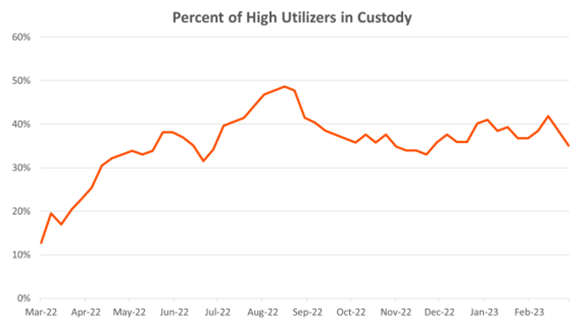
In a newsletter earlier this year, I delved into Seattle’s various crime statistics, highlighting that both violent and property crimes are up when comparing 2021 to 2022. Our Police Chief Adrian Diaz was more upbeat and revealed more recent stats, but there was no clear reason as to why those stats might be better or whether such a positive trend might last. SPD’s Chief also acknowledged that response times increased in the North Precinct to 9 minutes (which is 25% higher than the citywide average). While we await a more strategic crime reduction plan from the Harrell Administration, we are seeing results from other initiatives.
According to a Seattle Times editorial last week, “A recent status report from Seattle City Attorney Ann Davison on her High Utilizer Initiative shows that focused attention on the most active, repeat criminal defendants has paid pidends. Comparing last month with February 2022, violent and property crimes decreased by 31%.”
From the conclusion of the City Attorney’s report, “In its first year of operation, the High Utilizer Initiative successfully improved public safety by decreasing the impacts of the highest utilizers of Seattle public safety and criminal justice resources. The City Attorney’s Office estimates, based on historical data from this population, that the initiative’s crime reduction impact was thousands fewer crimes and over 750 fewer misdemeanor police referrals to the City Attorney’s Office. For community members, this translated to meaningful impacts for those neighborhoods most affected by high utilizer criminal activity. The initiative attempted to steer a number of high utilizers struggling with fentanyl and/or meth addiction to residential substance use treatment programs. Unfortunately, most high utilizers failed to engage or stay with those treatment programs. That leads us to the conclusion that most high utilizers are not ready to go direct to out-of-custody, voluntary addiction treatment programs.”
- For the City Attorney’s 12-page report “High Utilizer Initiative: One Year in Review,” CLICK HERE.
- For the Seattle Times editorial recognizing the success of City Attorney Ann Davison’s efforts, CLICK HERE.
- For the 2022 Crime Report, CLICK HERE.
- To report a crime in progress, call 9-1-1. To report certain crimes online after they have occurred, CLICK HERE. For other services, contact the Customer Service Bureau at 206-684-CITY (2489) or use the “Find It, Fix It App” on your smartphone.
Police Officer Recruitment Update: a Smaller Negative Number Is Still Negative
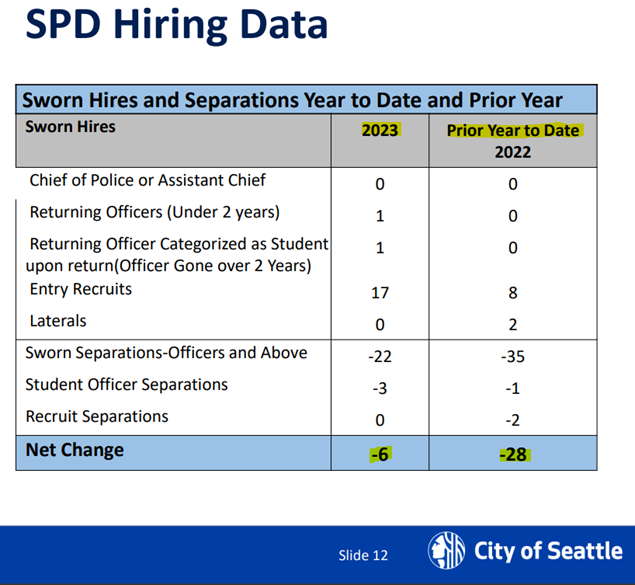
We have seen in recent surveys of the general public that the vast majority want City Hall to prioritize safety, including the restoration of the 400 police officer and detective positions lost over the past 3 years — along with other tools to prevent crime and respond quickly and compassionately to emergencies in a cost-effective manner. I continue to support that goal of restoring the officers and detectives — a priority most recently articulated in the Mayor’s Recruitment Plan announced 8 months ago.
The Mayor’s July 2022 Recruitment Plan stated on page 2, “As of May 2022, the number of trained and deployable officers — just 954 — is the lowest in over 30 years.” The Plan then stated on page 3 that the “goal is to increase the number of Seattle police officers who are authorized, funded, fully trained, and deployable to 1,450, a ratio of 1.9 officers per 1,000 residents.” In other words, restoring officer levels to what they were before the counterproductive “Defund” movement (and adding a few more officers as our city grows) will require a net gain of roughly 500 officers. I continue to support that goal.
NET RESULTS INSUFFICIENT: One of the roles of the City Council is to encourage the crafting of such plans, to amend / fund those plans, and to monitor the progress-to-goal of those plans. The recent 13-page PowerPoint update from the mayor’s office and the 2-page memo from SPD highlighted some initial promising findings (the pace of hiring has increased as compared to last year). But the documents did not provide the full picture (lacked detailed budget information and a comparison to pre-pandemic years), and they revealed a negative bottom line (we recently lost 6 more officers than we hired). While that figure of negative 6 new officers is better than the previous year, is still negative. If the figure continues to be negative, then we clearly cannot achieve the plan’s goal of a net restoration (gain) of 500 officers. The current hope is that the new professional recruiters, better advertising, and financing hiring incentives – along with a majority of Councilmembers now supportive of the hiring efforts – will soon accelerate the hiring, improve retention, and transform the numbers to net positive gains so we can finally get on the right track to address the staffing shortage and longer 9-1-1 response times to priority one emergency calls. But hope is not a strategy, and so we’ll expect to see SPD’s efforts intensify with the Mayor’s Office ensuring better results.
Brief, partial history:
- On September 10, 2021, I introduced two budget amendments to fund between $1 million and $3 million for SPD recruitment and retention but, unfortunately, only 3 of my colleagues supported it.
- On October 29, 2021, Mayor Durkan issued an Executive Order to fund hiring bonuses, which were offered just through January 2022, as summarized in the City Council Central Staff memo.
- On March 23, 2022, new citywide Councilmember Sara Nelson introduced Resolution 30250 calling for staffing incentives for SPD.
- On May 24, 2022, Council adopted both Councilmember Nelson’s Resolution 30250 and a bill sponsored by Public Safety Chair Lisa Herbold (Council Bill 120320 / Ordinance 126589) to lift a budget proviso, so that SPD could spend funds on moving expenses for new officers as well as a new recruiter.
- On July 13, 2022, Mayor Harrell introduced his 8-page Recruitment Plan (which was ultimately funded by Council Bill 120389).
- On August 16, 2022, a 6-3 majority of the City Council adopted Council Bill 120389 (Ordinance 126654), which modified the 2022 budget by funding Mayor Harrell’s initial police recruitment plan. The Council adopted that ordinance with 6 in favor (Juarez, Herbold, Lewis, Nelson, Pedersen, Strauss) and 3 opposed (Morales, Mosqueda, Sawant).
- At the March 28, 2023 Public Safety Committee, the Mayor’s Office and SPD presented a 13-page PowerPoint (and SPD previously provided a 2-page memo) with updates on their recruitment efforts. We hope to get a more complete report from the Mayor’s Office/SPD in early May 2023, and we’ll make sure that it’s accompanied by a thorough analysis by our City Council Central Staff.
Homelessness Spending: Seattle Pays Through the Roof
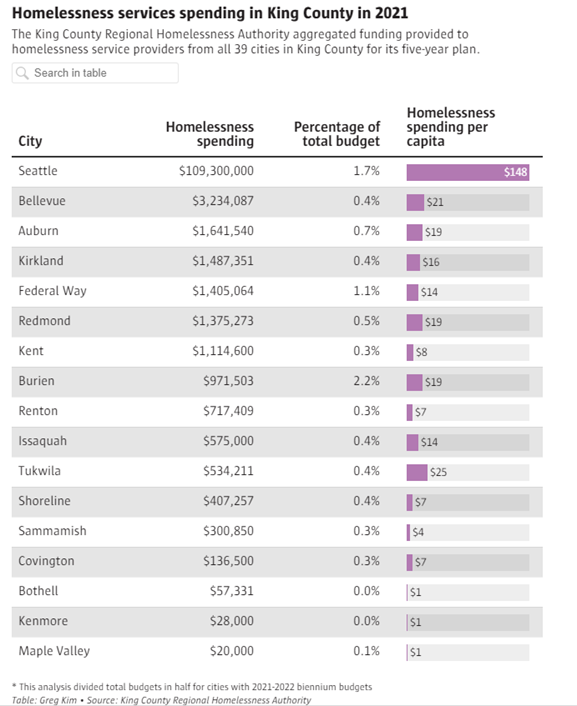
“In a first-of-its-kind analysis, The Seattle Times compared the overall budgets, spending on homelessness service providers and the location of homelessness services among the 39 cities in King County to find that Seattle allocates significantly more resources to homelessness in proportion to its population and budget.” The article also confirmed that roughly one-third of people experiencing homelessness in King County came from outside of King County.
For the Seattle Times’ thorough analysis of which localities are investing (or not) in reducing homelessness, CLICK HERE.
Revisions Needed to KCRHA 5-year Plan
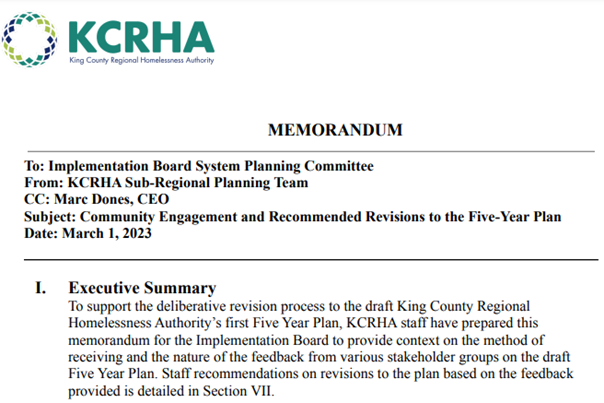
On March 10, 2023, the Seattle Times published an excellent Op-Ed by Sharon Lee and Pastor Robert Jeffrey, Sr. (CLICK HERE), which expressed concerns about the 5-year plan proposed by the King County Regional Homelessness Authority (KCRHA). Their Op-Ed expressed concerns similar to those in my long-winded critique from my January 30, 2023 newsletter (CLICK HERE). After receiving input from many people, the staff at KCRHA have crafted several minor amendments. (CLICK HERE for PubliCola’s thorough analysis of the proposed changes.)
The City of Seattle officially commented on the 5-year plan and brought up Tiny Home Villages: “The City of Seattle raised concerns around the low projections for tiny home 15 villages. Some folks within the City have noted the benefits of tiny home villages and would like additional clarity around the future of this housing model and why the projections identified in Goal 1 of the plan were so low.”
Big picture, the concerns I mentioned in my January 2023 critique of KCRHA’s 5-year plan are still problematic:
- Too Slow
- Too Expensive
- Unclear Costs
- Unrealistic
- Too Reliant on Seattle Taxpayers
- Lacks Prioritization/Sequencing
- No Proof of Concept with Weak Results Thus Far
- No Acknowledgement of Public Safety Nexus
The Implementation Board and the Governing Committee of KCRHA (which includes three Seattle elected officials) should NOT approve the 5-year plan from KCRHA staff unless major changes are made to address the concerns raised. In addition, the Implementation Board and Governing Committee should actively insist on a much quicker 6-month action plan, so we can move more people inside with greater urgency during the long-standing declared emergency for homelessness. Quicker action is especially important for Seattle because our city is not only paying the most money to KCRHA but also the most impacted by unsheltered homelessness from the entire region.
- For the draft 5-year plan from KCRHA staff, CLICK HERE, and for their staff revisions, CLICK HERE.
- For my critique of the new 5-year plan from KCRHA, CLICK HERE.
- The Seattle Times editorial board recently shared their concerns about the unrealistic cost of KCRHA’s plan (CLICK HERE).
- To comment on KCRHA’s plan, CLICK HERE.
Update on Encampments Under and Along I-5
Please see the discussion above in the District 4 section of this newsletter.
TAXES AND BUDGETS
Property Taxes Going Up, Up, Up — But Not Away
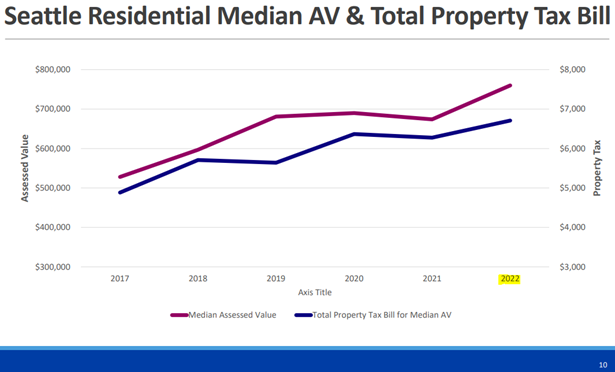
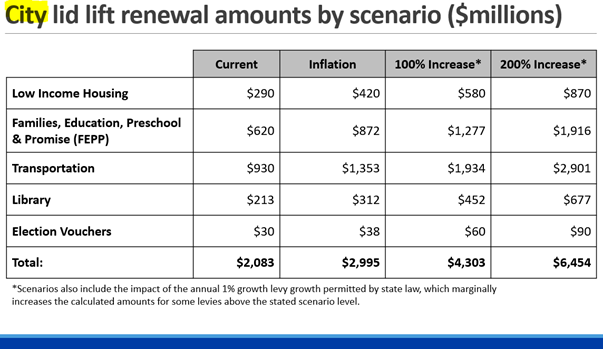
You’re not imagining it: your property taxes have been increasing. There are typically a couple of increases to the property tax rates sprinkled in each year by local and State governments, so it’s not easy for most homeowners and renters to see the totality or cumulative impact of all the property tax increases.
I am grateful to City Council’s Central Staff for pulling together in one place all the property tax information that might interest the general public. I previously amplified the call for more transparency about property tax increases, and our talented team of analysts delivered. By comprehensively presenting all property taxes in this easy-to-digest format, we are providing additional clarity and transparency so that the public can consider the implications of each new increase — not only as a source of revenue for the budgets of local and State government, but also as an expense that impacts the personal budget of each person and family in Seattle. As we know, property tax increases impact not just homeowners, but also renters. This includes those renting apartments and houses, as well as small businesses renting their storefronts, because the higher property taxes can be passed through to them. This is important information as the City of Seattle considers imposing future property tax increases, crafting other sources of revenue, and/or managing government expenses.
- For the presentation from our City Council Central Staff, CLICK HERE, and for their memo, CLICK HERE.
- For the schedule of City Council’s consideration of the Harrell Administration’s proposal to TRIPLE the property tax portion that goes toward Seattle’s (low-income) Housing Levy, CLICK HERE.
Impact Fees as a New Source of Revenue: see Transportation section later in this newsletter.
LAND USE POLICIES IMPACTING SEATTLE
Tree Protection legislation: Mayor Harrell and Councilmember Strauss proposed a revised “tree protection ordinance” and Mayor issued related Executive Order
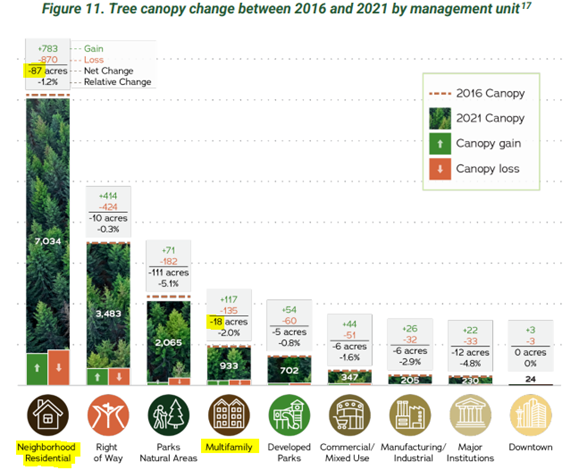
As we reported last August, data confirmed Seattle sadly lost 255 acres of trees (see August 24, 2022 blog post). The Office of Sustainability & Environment issued the final report on February 28, 2023.
This final report on tree canopy states, “As shown in Table 1, Neighborhood Residential contributes more to the city’s canopy than any other…For this reason, gains and losses in this area play an outsized role on the city’s overall canopy. The net loss of 87 acres (1.2% relative loss) made up over a third of the city’s overall canopy loss during the assessment period.”
More than 40% of the tree loss occurred on residential properties [that 41% comprises 87 acres of “neighborhood residential” (34% of 255 acres) and 18 acres of “multifamily” (7% of 255 acres)]. Under the current tree ordinance, the rate of loss has been 66% greater in multifamily zones (which includes “low rise” residential) than in neighborhood residential, formerly known as single-family. Specifically, the 2.0% MF loss rate is 66% more than the 1.2% SF loss rate. Because of the significantly higher rates of tree loss when land is zoned for higher density development, converting more neighborhood residential to multifamily zones, as proposed by new pending State laws (and as likely with future changes to our City’s Comprehensive Plan), could accelerate tree loss — if we don’t adopt a stronger tree protection ordinance now.
Some have tried to argue we could simply plant more trees in our parks. But people obviously live in the residential areas; therefore, it’s more important to keep trees in residential areas so that people benefit more directly from the cooling, stormwater filtration, and public health powers of mature trees, rather than requiring people to travel to a park. If trees were just about carbon sequestration (rather than also cooling, drainage, and public health), then perhaps we could just protect and plant trees in parks.
Moreover, it’s not an either / or proposition. Skilled and creative architects and developers can cluster the 3 or so units more closely together and retain the trees on the periphery of a lot. Or build stacked flats rather than condos, which are better for seniors since they can have the ground floor units.
For a Seattle Times article on this tree canopy report, CLICK HERE.
With the State government carelessly giving away new development capacity to private sector builders without meaningful public benefits — and despite Seattle’s ability to conduct its own comprehensive planning — the need to protect our dwindling tree canopy for resilience to climate change heat waves becomes more urgent.
Mayor Harrell’s team heavily revised the 2022 draft ordinance prepared by the prior mayor’s team, and the new version is being considered now in the Council’s Land Use Committee, chaired by Councilmember Dan Strauss.
I already know that many of my constituents feel strongly about protecting trees. For me, the forthcoming amendments from the Urban Forestry Commission will be key. That said, my initial reaction to the bill is that the devil is in the details:
“Our Emerald City’s goal was to increase tree canopy coverage before suffering from increased heat waves, so the terrible loss of 255 acres of precious trees proves Seattle has been heading in the wrong direction as many of us had warned.
“City Hall must take bolder action to preserve and plant trees because large trees are desperately needed infrastructure to cool communities, address inequities, remove carbon, reduce stormwater, and improve health. While our new law to register tree-removal companies was an important step to end the ‘wild west of tree cutting’ last year, we must implement a comprehensive tree protection ordinance this year that truly protects trees.
“The devil is in the details to ensure new policies actually protect more trees, rather than accidentally adding loopholes that lead to chainsaws or creating perverse incentives that allow developers to cut down big healthy trees to generate money for City Hall to plant little new trees.”
— Seattle Councilmember Alex Pedersen
INITIAL CONCERNS: Additional concerns raised thus far from many tree advocates include:
- The urgent need to protect more trees (requiring landowners / architects / developers to prioritize the retention of trees, preserving more of each property lot to retain existing trees, and protecting trees between 6 inches and 12 inches in diameter),
- Collecting MORE data EARLIER about all the trees before any cutting begins,
- When replacing trees, requiring the replacement trees to have at least the same diameter girth as the removed tree (rather than waiting decades for the canopy of the replacement trees to catch up to what was chopped down years earlier), and
- Preventing a new “in-lieu” fee from creating an incentive to chop instead of designing to conserve trees. SDCI estimates the amount of money raised would be less than $200,000 per year. Tree infrastructure is so valuable that we should simply make that small, but mighty investment from our General Fund.
It’s important to note that “Regulation” does not mean “Protection.” Just because more trees might be “regulated” going forward, doesn’t mean they will be saved from destruction. Also, “Replacement” does mean “Parity.” As the proposal is currently written, a large 24-inch tree can be replaced with a 2-inch tree.
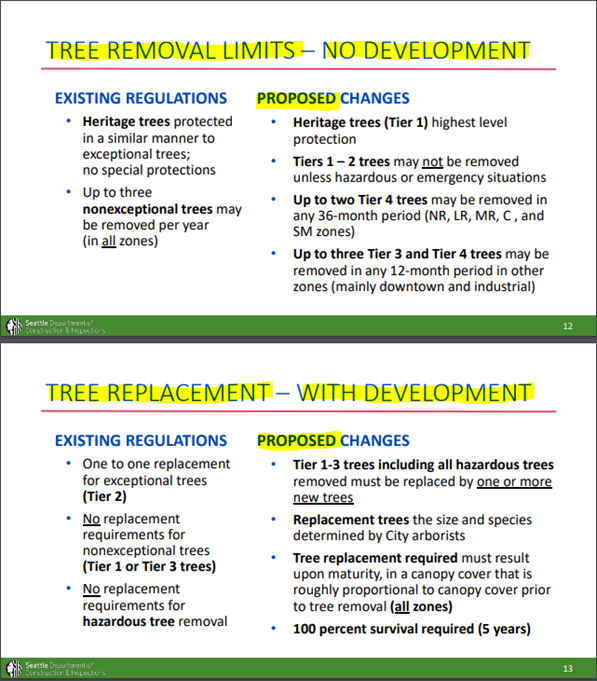
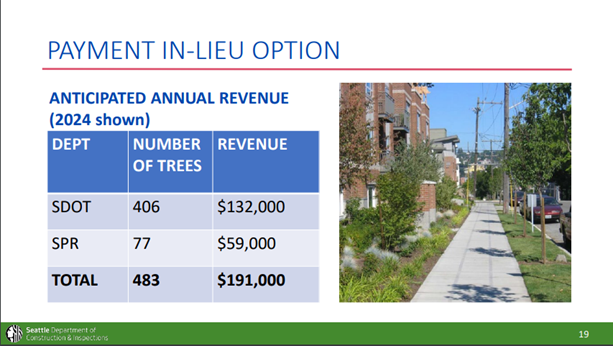
3 Ways to Raise Your Voice:
- Call into the Council Meeting: You can register online two hours ahead of each meeting. Then call in to be prepared to speak on your telephone when the meeting starts. For instructions on how to register and call in, CLICK HERE or use this website: http://www.seattle.gov/council/committees/public-comment
- Speak in person: You could also come to City Hall to speak in person. (Arrive at least a few minutes before his committee starts to complete the Sign-In Sheet.)
- Email: The email addresses of the members of the Land Use Committee are: Dan.Strauss@seattle.gov, Tammy.Morales@seattle.gov, Teresa.Mosqueda@seattle.gov, Sara.Nelson@seattle.gov, Alex.Pedersen@seattle.gov. To send an e-mail to all nine Councilmembers, you can use this single email address: Council@seattle.gov.
Current Schedule/Next Steps:
A special thanks to Land Use Chair Dan Strauss and his team for keeping the complex committee schedule organized and for balancing the need for speed with the need for ample input from the public and tree experts (such as from the Urban Forestry Commission).
- Wed, March 29, 2023: the five City Councilmembers of the Land Use Committee meet again on this tree protection legislation. For the presentations by SDCI, CLICK HERE (March 29) and HERE (March 22).
- Wed, April 5: Urban Forestry Commission (hopefully) finalizes its suggested amendments.
- Fri, April 7 at 2:00 pm: the five City Councilmembers of the Land Use Committee meet again on this tree protection legislation.
- Wed, April 11: Internal deadline for Committee members to send proposed amendments to City Council’s Central Staff for finalizing.
- Fri, April 21 at 2:00 pm: Committee votes on amendments
- Mon, April 24 at 10:30 am: public hearing (but best to opine before this date).
- Wed, April 26 at 2:00 pm: Land Use Committee votes on the amended bill.
- Tue, May 2 at 2:00 pm: full City Council is likely to vote on the bill (Be alert for late-breaking amendments from the four Councilmembers not on the Land Use Committee.)
More Info:
- For the new Council Bill for tree policies, as proposed by Mayor Bruce Harrell and Councilmember Dan Strauss, CLICK HERE for CB 120534. For the related fiscal bill (CB 120535), CLICK HERE. (Update: Those are the versions officially introduced on March 20, 2023 via Council’s Introduction & Referral Calendar. For the older version from the March 7 press release, CLICK HERE.)
- To compare the March 7, 2023 (Harrell-Strauss version) to the Feb 2022 (Durkan-SDCI-SEPA version), CLICK HERE. Is the new version stronger for trees? Review the comparison and decide.
- For the 4-page Executive Order issued by Mayor Harrell on March 7, 2023, CLICK HERE.
- For the draft Director’s Rule for proposed In-Lieu Fees, CLICK HERE.
- For the draft Director’s Rule listing the “Exceptional Trees” now called “Tier 2 Trees,” CLICK HERE.
- For the 18-page “Director’s Report,” that explains some of the proposed changes, CLICK HERE.
- For a 4-page “Expanded Summary of Code Changes,” CLICK HERE.
- For their joint press release announcing their bill and executive order, CLICK HERE.
- For my ongoing blog posts about protecting trees in Seattle, CLICK HERE.
- For the proposed in-lieu fee table, see the Director’s Rule, but here’s the main table of proposed fees:
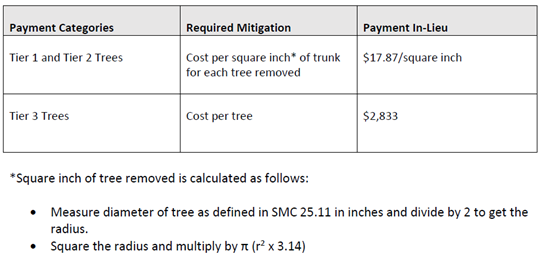
Impact Fees Revenues: an Overdue Alternative to Increasing Your Property Taxes to Fund Transportation Safety Projects for All
Please section on Transportation later in this newsletter.
DOGGIE THERAPY:
If you’ve read this much of my relatively grumpy newsletter, you deserve to enjoy a photo of a cute dog:
TRANSPORTATION & SEATTLE PUBLIC UTILITIES COMMITTEE
(This is the Committee currently chaired by Councilmember Pedersen, so we provide extra information on its issues.)

To distribute the workload of city government, each of the nine Councilmembers chairs a committee. The Committee I chair (Transportation & Seattle Public Utilities) meets on the 1st and 3rd Tuesdays of each month at 9:30 a.m. at City Hall (and on Seattle Channel), except during the two-month budget review season in October and November.
Increasing Traffic Safety: Creatively Restoring the Missing Piece of Enforcement.
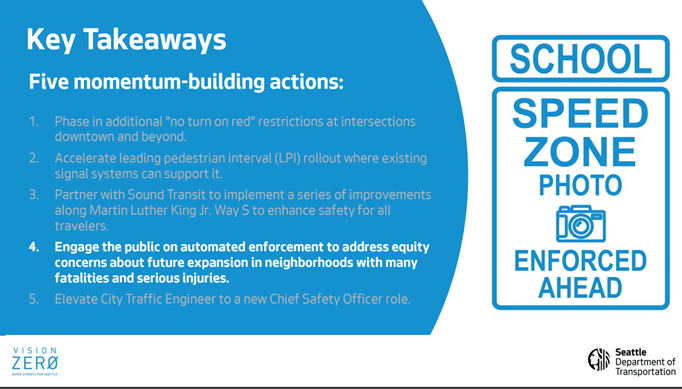
Earlier this month, Seattle Times columnist Danny Westneat rightly criticized the lack of traffic safety enforcement in his column “The Seattle seesaw: Traffic tickets from police have dropped 90%” (CLICK HERE). Mr. Westneat wrote, “In 2018, I was one of about 28,000 Seattle drivers to get ticketed by police for a non-criminal driving infraction. In the 2010s, Seattle police doled out an average of roughly 40,000 tickets annually, more than 100 moving violation tickets a day. The cops have all but stopped. They gave out only 3,863 tickets for 2022 — a drop of 90% from the 2010s pre-pandemic average.”
According to SDOT data, fatalities in 2018 were 14 compared to an average of 28 fatalities since that time.
When I asked about enforcement in the past, I was told by some SDOT officials that they didn’t focus on enforcement. It’s important to note, however, that Oslo, Norway — often cited as a city that has successfully reduced traffic-related deaths for pedestrians — strictly enforces its laws against reckless driving.
Regardless of whether Seattle residents would like to see more traditional enforcement of traffic safety laws, we do not currently have the police personnel to conduct such enforcement in a robust manner. That’s one of the reasons why automated camera enforcement has become such an important option.
Fortunately, under the leadership of the new SDOT Director and the Harrell Administration, automated camera enforcement is part of the strategy to reduce traffic fatalities and serious injuries. The 4th early action listed in SDOT’s report is to “Engage the public on automated enforcement to address equity concerns about future expansion in neighborhoods with many fatalities and serious injuries.” I believe we have spent more than sufficient time talking about automatic enforcement. We know automated enforcement works. Automated enforcement removes the need for police response in the field. It holds reckless drivers accountable. The Seattle Municipal Court already has some alternative accommodations for residents who might have trouble paying for the tickets.
In July 2022, I was invited on a listening tour in South Seattle and students called on us for action now to slow down the reckless driving near their school. The Council generously identified an additional million dollars to double automated enforcement in school zones. (Amendment SDOT-103-B-001-2023).
I believe we’re past the point of talking — it’s time we start implementing solutions to slow down drivers and protect pedestrians, especially where most of the fatalities are happening.
SDOT will return with a more specific Vision Zero traffic safety “action plan” in September. I’d like us to hear from SDOT sooner on automated enforcement, because the State has already provided more authority to address drag racing (which we see on Sand Point Way NE in our District 4).
More Info:
- For SDOT’s 22-page “Top-To-Bottom Review” summary and short-term next steps on Seattle’s “Vision Zero” traffic safety efforts, CLICK HERE.
- For SDOT’s 37-page full report, CLICK HERE.
- For SDOT’s 20-page PowerPoint presentation, CLICK HERE.
- For the Harrell Administration’s February 23, 2023 announcement on Vision Zero, CLICK HERE.
- To provide feedback on SDOT’s top-to-bottom review and proposals, CLICK HERE.
- For SDOT’s Vision Zero website, CLICK HERE.
- For Seattle Times’ initial news coverage of the City’s Vision Zero announcement, CLICK HERE.
- To watch the video of our Transportation Committee meeting from March 7, 2023, CLICK HERE. (Vision Zero traffic safety is the first item on the agenda after public comment.)
Status of Implementing Bridge Audit Recommendations: 9 out of 10 Ain’t Good
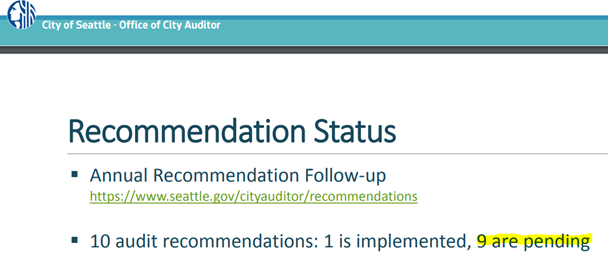
In our city of waterways and ravines, we rely on safe and open bridges to connect communities, carry all modes of transportation, and keep our fragile economy moving. As many of us painfully recall, three years ago the West Seattle Bridge was cracked and closed. Two and a half years ago, I had the City Auditor assess the physical conditions and publish its recommendations for all Seattle bridges. The City Council has had several detailed discussions about bridge safety during the past three years, and the City Council has repeatedly stepped up to provide additional funding opportunities. Therefore, I believe there has been more than enough time for the Seattle Department of Transportation (SDOT) to have prioritized bridge safety, yet I share the concerns of residents and businesses across Seattle who are not seeing a sense of urgency to address bridge safety.
I appreciate our new SDOT Director adding two leadership positions to implement the audit recommendations. But, after 2 ½ years, the City Auditor reported last week that only 1 out of 10 of its bridge recommendations is complete. There’s been a recent flurry of planning, paperwork, and pronouncements for the future, but not enough actual physical upgrades underway on our bridges. I have seen SDOT move quickly when it is eager to accomplish a project, but our bridge infrastructure is not yet experiencing that same level of urgency or achievement.
We will have our City Auditor and SDOT return to our committee later this year and will continually ask them for updates, especially for the bridges near the Ship Canal that are ranked in poor condition and/or that had been promised seismic upgrades.
- For the presentation by our City Auditor on March 21, 2023, CLICK HERE.
- For the presentation by SDOT crafted in collaboration with the City Auditor for March 21, 2023, CLICK HERE.
Impact Fees Revenues: an Overdue Alternative to Increasing Your Property Taxes to Fund Transportation Safety Projects for All
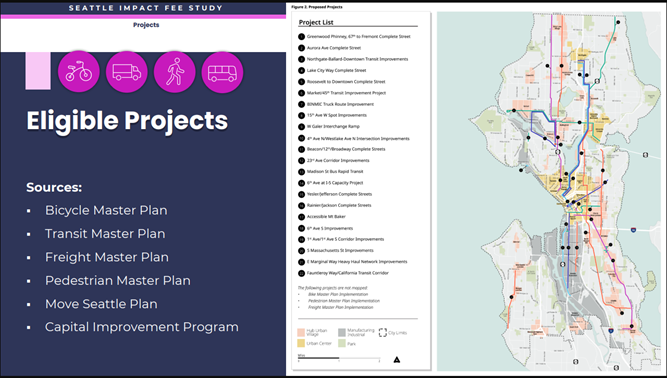
The Seattle city government continues to struggle to collect revenues sufficient to cover its costs, including for its infrastructure. This fiscal problem is caused by a combination of factors: some revenue sources declining, city government officials struggling to manage existing costs (such as personnel and pensions), and City Hall taking on the cost of new projects and programs (albeit for worthy causes). City Hall has increased sales taxes, business taxes, and property taxes — and more property increases are on their way for behavioral health and for low-income housing. Property taxes increase the ongoing cost of housing for both homeowners and renters. I share the concerns that this cumulative burden on taxpayers could imperil efforts to renew a property tax for transportation projects, including pedestrian safety, bridge safety, transit supports, and street maintenance.
For years, State law has authorized local governments to charge “impact fees” to real estate development projects to help pay for the increased burden on our already stressed infrastructure. Impact fees are used by more than 70 Washington State cities and many more across the nation to cover some of a city’s infrastructure costs — but not in Seattle.
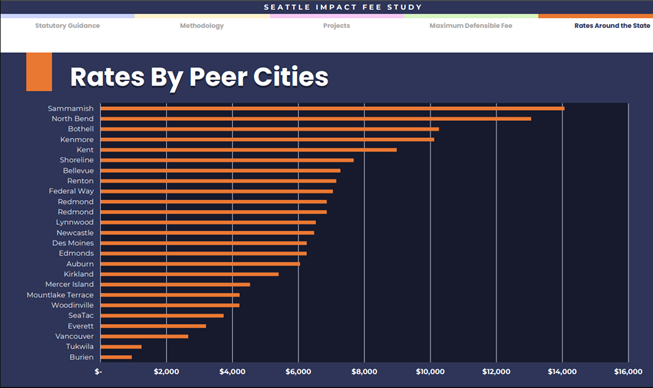
Seattle has yet to charge these fees to help pay for its infrastructure; City Hall instead chooses to pass those costs to the general public through various taxes. City Hall may finally need to seriously consider these fees because the current 9-year, $930 million package funding most transportation projects will expire soon.
More Info on Impact Fees:
- Presentation by Council Central Staff (“Background and Legislative History”) on March 21, 2023, CLICK HERE.
- For the presentation from the expert consultant Fehr & Peers, CLICK HERE.
- For the consultant’s complete draft study dated January 2023, CLICK HERE.
- For the explanation of impact fees from the non-partisan Municipal Research Services Center (MRSC) for Washington State, CLICK HERE.
- For the City Council website on Impact Fees, CLICK HERE.
Commuting Stats:
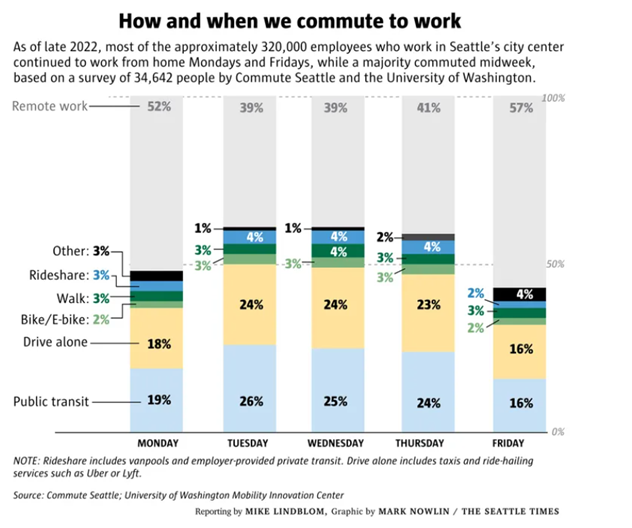
While King County Metro reports bus ridership remains down 50% from the most recent pre-pandemic year of 2019, transit ridership is used by a relatively large majority of workers who are still commuting. According to the study, bikes are used by 4% or less of Seattle commuters and those commuters tend to have relatively high household incomes. Both car drivers and transit riders decrease on Mondays and Fridays.
- For a detailed article about the survey by the Seattle Times, CLICK HERE.
- For the official survey results from Commute Seattle, CLICK HERE.
Cleaning Up Sound Transit Stations downtown:
To get even more people to choose environmentally friendly transit, both King County Metro (buses) and Sound Transit (light rail and buses) need to continue to care about the rider experience, including safety.
Sound Transit and King County have shared their responsibilities for the Downtown Seattle Transit Tunnel, which includes several transit stations. At long last, we have unified all responsibility under Sound Transit for the safety, cleanliness, and operation of those downtown tunnel stations. As a party to the interconnected 20-year-old agreements that have governed the use and responsibility for those downtown stations, the City of Seattle signed a Transfer and Conveyance Agreement, which is authorized by Council Bill 120522 as adopted by City Council on March 14, 2023.
Sound Transit’s CEO Julie Timm recognized this paramount responsibility of safety when she told board members on March 2, 2023, “Both the very real, as well as the perceived level of safety and security on our system, has not lived up to our value[s], or our commitment to our riders. This is keenly seen and felt by the decreased security presence on our system and the increased presence of drug use and unsanitary conditions on our trains, buses and platforms.” For the thorough Seattle Times article on the challenges facing Sound Transit in the downtown tunnels, CLICK HERE.
WE WANT TO HEAR FROM YOU: Ways to Provide Input
“Find It, Fix It” App: updated user interface from Seattle’s Customer Service Bureau
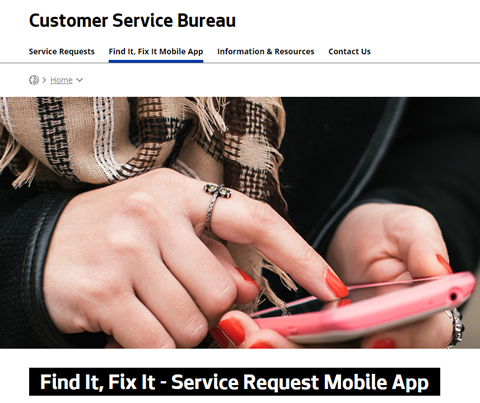
https://www.seattle.gov/customer-service-bureau/find-it-fix-it-mobile-app
Your city government has made it a bit easier for residents to report an issue. New improvements launched in November 2022 to the City’s Find It, Fix It mobile app will make it easier to report an issue, track reports, and view your service requests on anything from a pothole to an abandoned vehicle
City Council Meetings on the Internet
Viewing & Listening: You have a few options to view and hear Seattle City Council meetings. To view Council meetings live on Seattle Channel, CLICK HERE. You can also listen on your phone by calling 253-215-8782. To view the recordings of City Council meetings that have already occurred, CLICK HERE.
Our City Council meetings are held Tuesdays at 2:00 p.m. Even after returning to in-person meetings, the public will still be able to call in their comments at City Council meetings – this is an important upgrade for public input. I would have supported moving our main Council meeting to the evenings to make it easier for people with day jobs to visit us, but the technological upgrades now enable anyone to call into the public comment periods. Last year, we updated our City Council Rules and parliamentary procedures to improve the efficiency of the City Council by enabling Councilmembers to focus their work on city government business rather than on Resolutions on other issues such as international affairs.
Commenting: You can submit comments to me at Alex.Pedersen@seattle.gov or to all 9 Councilmembers at Council@seattle.gov. For the instructions on how to register and call in to a meeting, CLICK HERE. Sign up begins two hours prior to the meeting start time.
Meetings with Your Councilmember Pedersen: In Person Again!
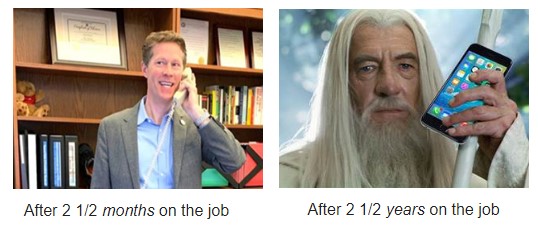
In-person office hours on Friday afternoons are back to Magnuson Park’s Building 30 conference room at 6310 NE 74th Street, Seattle, WA 98115, just a couple of “blocks” into the park’s main entrance. You may continue to sign up through my website or by CLICKING HERE, so I can hear your ideas, concerns, and requests. You can also just send an e-mail to alex.pedersen@seattle.gov.
For previous e-newsletters, visit my blog by CLICKING HERE.
We are getting through this together, Seattle!
With gratitude,

Councilmember Alex Pedersen
Seattle City Council, District 4
Email: Alex.Pedersen@seattle.gov
Phone: (206) 684-8804
Find It, Fix It
Posted: March 31st, 2023 under Councilmember Pedersen

